Sanja Ćopić is a typical young artist from the Balkans. Born in 1992 in Belgrade, she graduated from the department of sculpture at the Faculty of Fine Art and obtained her Master degree in the class of prof. Mrđan Bajić. Although she is a laureate of prestigious awards, Sanja cannot earn enough for living with her art and was forced to have a ‘steady’ job. This conflict between idealization (the way we imagine life should be) and reality (the way life really is) is present in all the Sanja’s artworks.
In the past, by observing the world around themselves artists learned something new about themselves as well; Ćopić reaches for inversion, and by exploring herself she learns something new about the world that surrounds her and the relations that connect her to that world. Coping with her insecurities and frustrations, she unmasks them in front of us in the form of artwork. In the collision of real and ideal, Ego and Superego, the artist analyses the concepts of beauty, femininity, vulnerability, strength, emotionality, sadness, frustration, ephemerality and mortality.
Sanja’s art is pronouncedly personal. The artist is in the centre, with her body and soul. She does not focus on the environment but openly dissects herself, her appearance, emotions, character and expectations. In My Fragrance series on the original pages from magazines with advertisements for perfumes, the artist uses a classic technique to paint her face instead of models’ and actresses’ faces. Visibility of artistic intervention testifies that the goal is its obviousness. The artist becomes the metaphor of all the ‘less perfect’ women to whom perfection is being placed as an imperative, so they can, at least, enjoy the luxury and carelessness of the world of advertisements for perfumes. She incorporated her face with flaws and qualities into idealized photoshopped bodies and seductive masses-en-scène by problematizing the evaluation of the non-ideal with the question of whether imperfection can be beautiful and, being as such, does it deserve the same treatment. The artist says that this is a kind of wish board, the fantasy of many women: “A way of making it real and enjoying one’s own imperfect, female image in an unusual, glamourized setting”.
In Maybe I Should Have Been an Artist Sanja painted herself as a child on Venetian blinds – we recognize the contour of her lips, nose, and shape of her ear. This happy, strong-minded girl with fringes, full of life and confidence looks right at us, full of anticipation. The artwork questions the value, purpose and significance of art in today’s world. By our intervention (by pulling out Venetian blinds), the girl becomes barely visible or reappears. The responsibility for this painted young soul is appreciable because her survival depends on us and our decision to intervene. The artwork speaks about the identity crisis of all young artists, the disparity between wishes and reality, the dilemma of choosing a ‘steady’ job, or what you’ve been wanting to (and knowing you should) become since the childhood.
Sanja Ćopić decanted her desire to become an actress into a series of video works named My movie scenes, organized in the form of a triptych: the original scene from a film that the artist had not seen before is on the left side, in the middle Sanja interprets the role of this scene according to her personal insight, and on the right is the version created after watching the film. All three soundtracks are played simultaneously and create a cacophony. My movie scenes combine the original, interpretation, deconstruction and reconstruction of the selected scene in the same work, in which all the variants of the featured female character coexist in space and time.
In conceptual work titled It is important that you are aware of everything at all times, the artist covered a table with a large ‘To Do’ list on which she wrote everything she considers missing from her ‘ideal’ life. A vase with flowers and a bowl full of sweets are placed on the table as a reward for success (or consolation due to failure). Sanja’s list does not contain any commonplaces; it is very personal and lists the changes and actions that she believes to bring her closer to her ideal alter ego.
Another focus of her work is memories and re-examining personal relations to change, ephemerality and death. The accent is on emotions, the deep-going experience of everything: crying (Crying over Lost Love), singing (Songs to Cry to), breakage, natural selection, age and mortality (How to Love Ugly and Sad Things). In Crying over Lost Love, we testify to a documentary crying that, like a musical piece, has its own overture (reason), elaboration, culmination and ending. The feeling of distress and empathy is shifted, and the Rashomon effect of the observer and the exhibitionism of the artist are magnificently balanced.
The art of Sanja Ćopić set us about communication; it invites us to embrace, comfort, encourage, praise, sympathize, sing and weep with her, but also to reconsider our understanding of the relation between the real and the ideal, the Ego and the Superego. Sanja Ćopić leads us to think about our own lives. By drawing us into her world, she awakes the empathy in us and the desire to recognize, understand and support both her and ourselves.
Info:
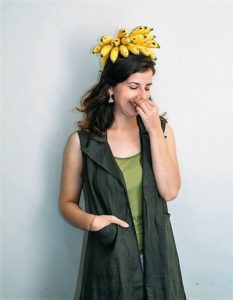 Sanja Ćopić, artist portrait
Sanja Ćopić, artist portrait
 Sanja Ćopić “Maybe I should have been an artist”, venetian blinds, acrylic, 110x200cm, 2018, courtesy of the artist and Art Zoom
Sanja Ćopić “Maybe I should have been an artist”, venetian blinds, acrylic, 110x200cm, 2018, courtesy of the artist and Art Zoom
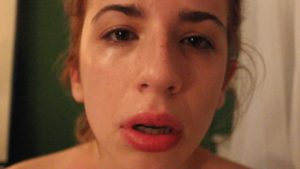 Sanja Ćopić “Crying over Lost Love” 2016, video frame, ph courtesy of the artist and Art Zoom
Sanja Ćopić “Crying over Lost Love” 2016, video frame, ph courtesy of the artist and Art Zoom
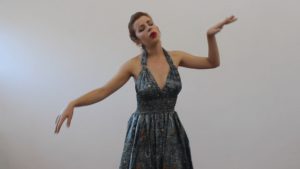 Sanja Ćopić “Songs to cry to, All I could do was cry” 2015, video frame, courtesy of the artist and Art Zoom
Sanja Ćopić “Songs to cry to, All I could do was cry” 2015, video frame, courtesy of the artist and Art Zoom

Graduated Art history at the University of Belgrade, Faculty of Philosophy. Former curator and a member of in Lucida Gallery art council. One of the founders and director of the association for the development and promotion of contemporary visual arts ART-ZOOM. Lives in Belgrade, Serbia.


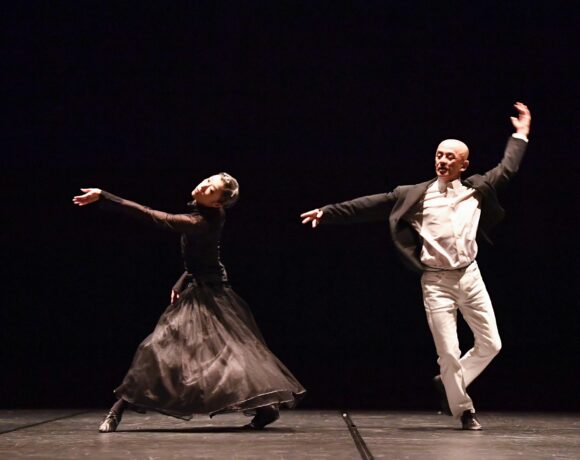
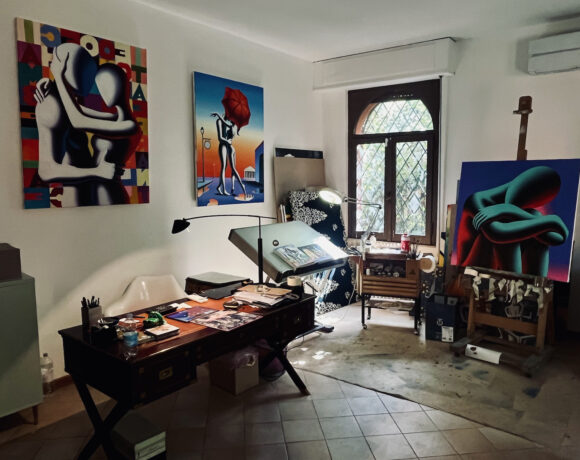
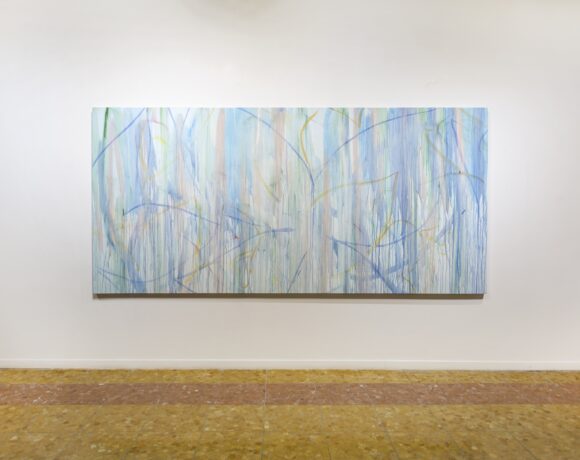

NO COMMENT